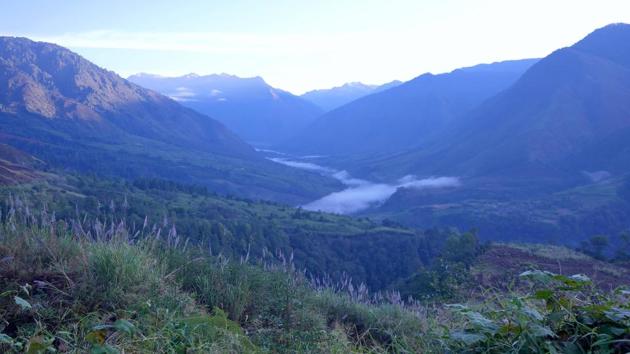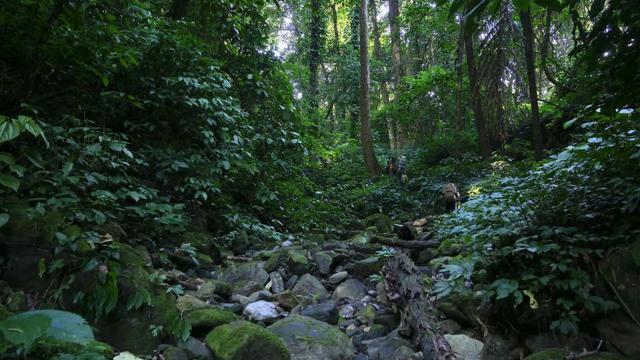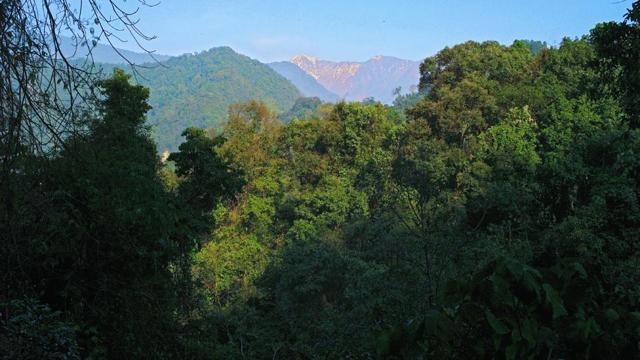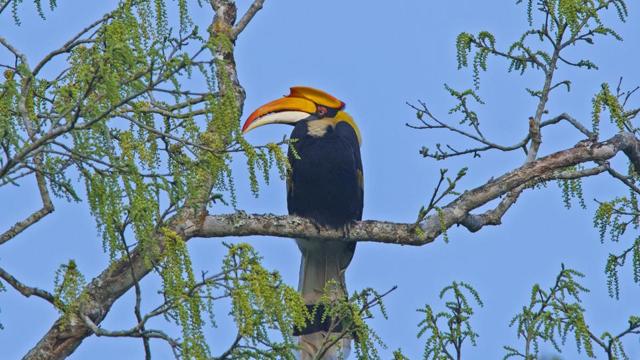2.7 lakh trees to be felled for hydropower project in Arunachal’s Dibang Valley
A FAC sub-committee report on Tuesday recommended the 3,097 MW Etalin Hydroelectric Project be allowed with a condition that the developer deposits money for wildlife conservation in the area.
The Union environment ministry’s Forest Advisory Committee (FAC) will on Thursday take a call on granting clearance to a hydroelectric project in one of the most biodiverse Himalayan zones in Arunachal Pradesh’s Dibang Valley. The project will involve diversion of 1150.08 ha of forest land and felling of 2.7 lakh trees in what FAC’s documents call “subtropical evergreen broad-leaved and subtropical rainforest”.

“We have not heard from any locals about their concerns about the project. The FAC will hear it tomorrow [Thursday],” said Anjan Mohanty, the inspector general of forests.
A FAC sub-committee report on Tuesday recommended the 3,097 MW Etalin Hydroelectric Project be allowed with a condition that the developer deposits money for wildlife conservation in the area.

The FAC in October said the seven-member sub-committee will visit the project site to check if the land requirement for the project can be reduced after the ministry’s regional office in Shillong raised several concerns about the diversion of a large area as well as potential biodiversity loss and conservative estimation of trees to be felled. The sub-committee was asked to look into tree enumeration for felling and the project’s biodiversity impact.
The sub-committee, which visited the site in February, found that the project lies in a remote area, and hence infrastructure facilities will have to be planned over a large area.
The developer, Etalin Hydro-Electric Power Company, a joint venture of Arunachal Pradesh’s Hydro Power Development Corporation with Jindal Power Limited (JPL), has reduced the forest area needed to be diverted to 1150.08 ha from 1165.66 ha, according to the sub-committee’s report.
The regional office also highlighted the sampling intensity of trees at the project site was very low and hence gave a conservative estimate of trees to be felled. It added there was no accounting of huge trees that will be cut down. The sub-committee found that over 3 lakh trees are to be felled. The company has submitted that it will reduce the number to 2.7 lakh.

A Wildlife Institute of India (WII) study has documented 413 plant, 159 butterfly, 113 spider, 14 amphibian, 31 reptile, 230 bird and 21 mammalian species within the project area. The WII has recommended a plan to prevent loss of animals and birds there, and the development of butterfly and reptile parks, nest boxes, habitat restoration etc.
No tiger presence has been documented at the project site through camera trapping. But Dibang Wildlife Sanctuary 12 km away has recorded tiger presence in the vicinity.
The company plans to develop a combination of two run-of-the-river projects involving the construction of concrete gravity dams on the Tangon and Dri tributaries of the Dibang.
The sub-committee’s report recorded the environmental impacts of the dams even as it added the project has the support of the local populace and has no major environmental issue. “In addition, it has remarkably favourable geological conditions for the region.”
The FAC had earlier in 2019 observed the proposed project falls under the richest Himalayan bio-geographical area and comes under one of the world’s mega biodiversity hotspots.
The proposed project location is at the junction of the Paleo-arctic, Indo-Chinese, and Indo-Malayan bio-geographic regions having luxuriant forests and a plethora of flora and fauna.
Activist Jorjo Tana Tara underlined the proposed project is located in an extremely eco-sensitive area. “There have been local protests.”
JPL MD and CEO Bharat Rohra said they have been eagerly waiting for the clearance, which is a must. “The proposal for grant of FC [forest clearance] to Etalin project was submitted to the environment ministry in 2014. The proposal has since been discussed in FAC a couple of times. In the EAC meeting scheduled to be held on April 23, the report and recommendations of the sub-committee of FAC will be discussed for final recommendations on the grant of FC to the project.” Rohra said they are hopeful that the FAC will finally recommend the proposal for the FC grant. He added the company will implement the conservation plan.

Centre for Policy Research’s senior fellow Manju Menon said the world is living through a climate crisis but the FAC or other institutions simply ignore or refuse to factor in the role that forests, rivers, and land in Arunachal Pradesh can play to help deal with this. “These resources will also be massively affected by climate change. Our assessment procedures are completely misplaced for this environmental context we are now in.”
Get Current Updates on India News, Lok Sabha Election 2024 live, Elections 2024, Election 2024 Date along with Latest News and Top Headlines from India and around the world.



